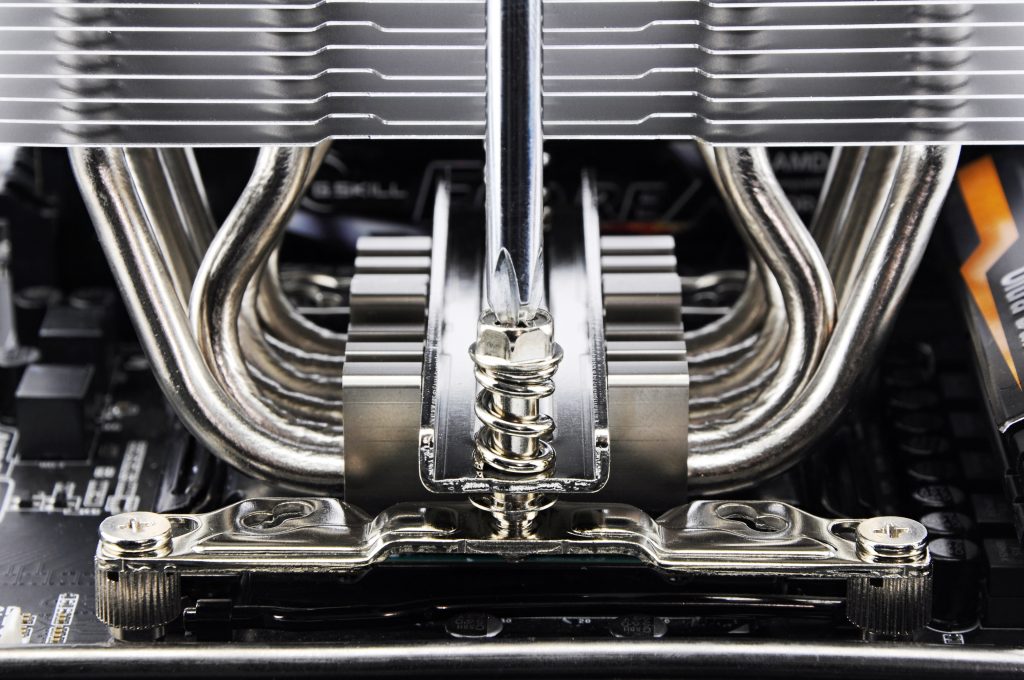Description and results
One of the things that make testing of CPU coolers interesting is that you can never know how will a particular cooler perform. There are too many variables that affect the results. Such as the pressure on the processor, for example. We‘ve tried to find out what a weaker assembly system can cause, but also whether it pays off to cross the safe threshold.
Two years ago, the issue of pressure intensity was very popular. Super tight clasps of some coolers were not the best solution for thin Intel PCBs. Maybe you can remember the sad images of deformed or broken substrates. Scythe Mugen 4 became notorious because of that, but some Thermalright coolers were also quite “aggressive“. Most manufacturers therefore adjusted their assembly systems by replacing the original screws with ones that have shorter threads.
To give you an idea how can a pressure of the clasp affect the cooling performance, we carried out detailed tests with Scythe Mugen 5 rev. B.
How we were testing + results
We used Core i7-5930K overclocked to 4.3 GHz with Vcore set to 1.25 V. The load was simulated in IntelBurnTest (7500 MB) for 600 seconds.We adjusted everything (high-speed fans included) accordingly to achieve the biggest consumption and heating possible, but we also kept a reserve for modes with weaker pressure.
The clasp was regulated in six steps. First we used maximum pressure, and then reduced the tension by one turn in every following test. We used a fixed marker to be as precise as possible.
In total, the pressure was reduced five times, and at the last stage, the only force that was keeping the cooler on the IHS was its own weight. We measured each setting twice, with the motherboard horizontally and vertically.
The difference between 100 and 80 percent of the clasp pressure is relatively small, in the horizontal position it is not more than a half degree Celsius. With the board vertically, it is approximately twice as much. From this, we can conclude that the clasp pressure was set well. If it was higher, let’s say 120%, the temperature difference would be less than 1 °C in any case, compared to the current maximum. It will be less than 0.5 °C in practice, and with less demanding processors, there will be virtually no difference. And Mugen 5 does not represent any extreme. It has an above average pressure, but significantly lower than M4. This only supports the claim that overdoing something is counterproductive.
Less pressure means more heat. And especially in vertical position – gravity is not helping here but quite the opposite. With 0% pressure of the clasp, the contact was so weak that it was not possible to absorb the heat and the temperature went mad. That’s why there is a missing value in the chart.
If you like magazine HWCooling, please support us.
We cannot keep publishing this kind of detailed content on regular basis without your help because it is very time consuming. We will be grateful for every contribution. Thank you!
- Contents
- Description and results
